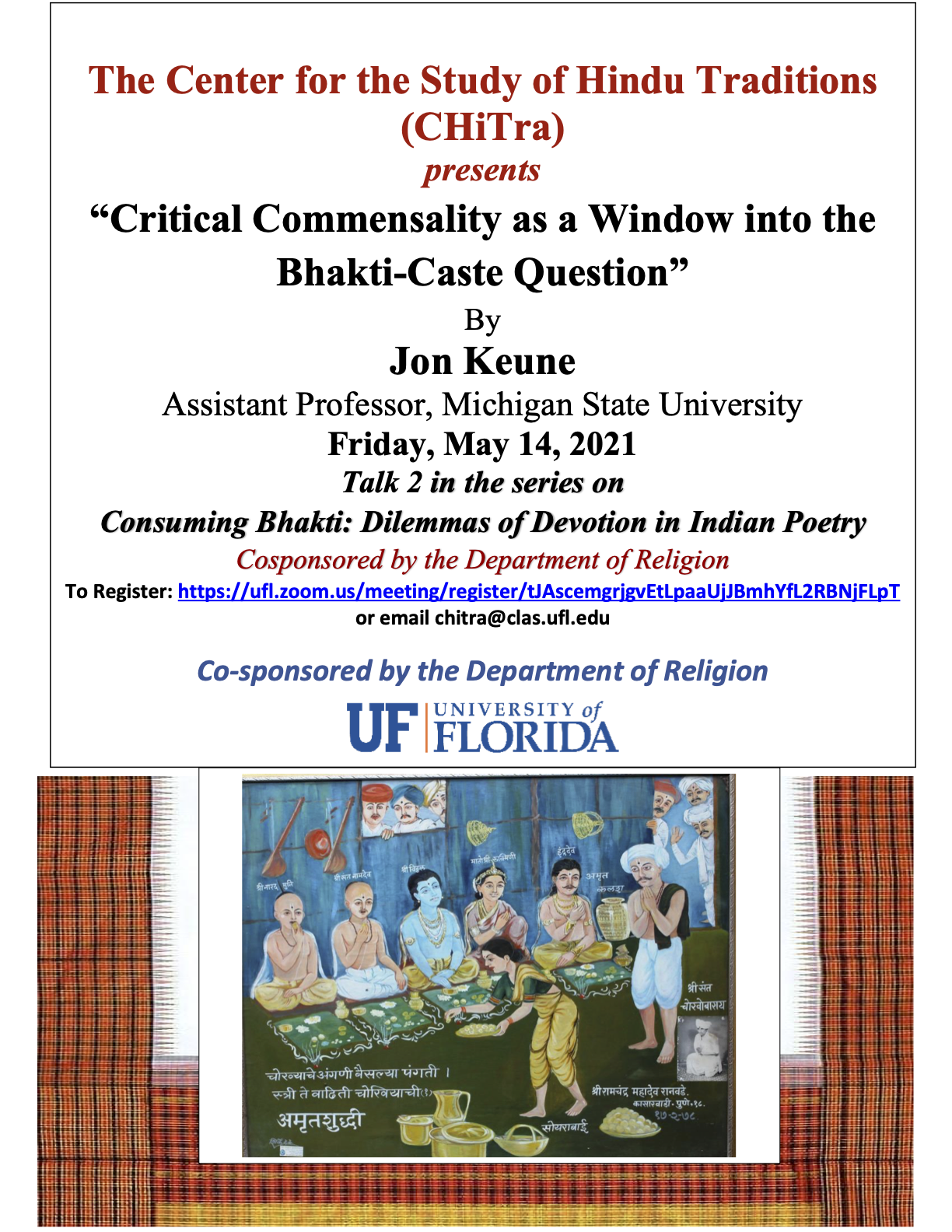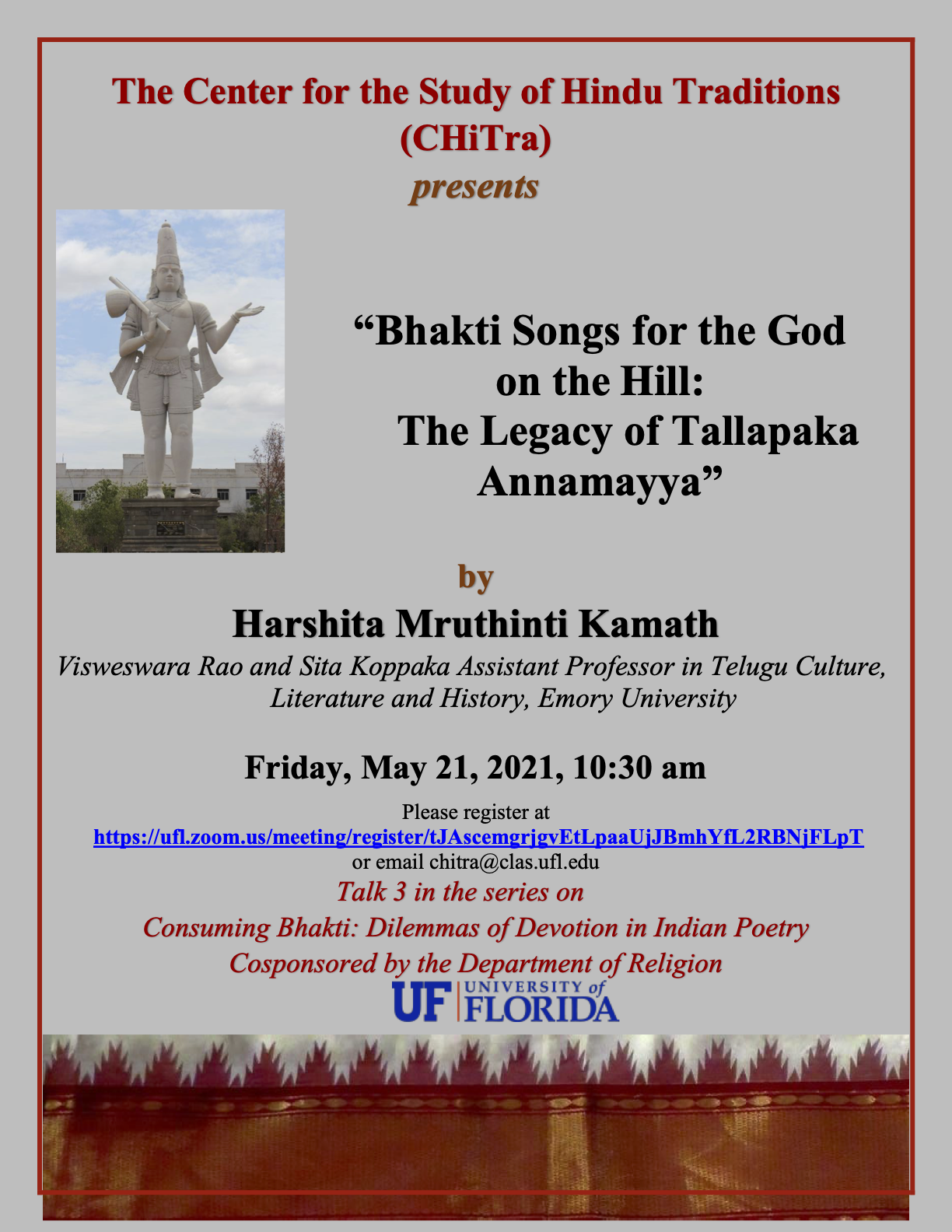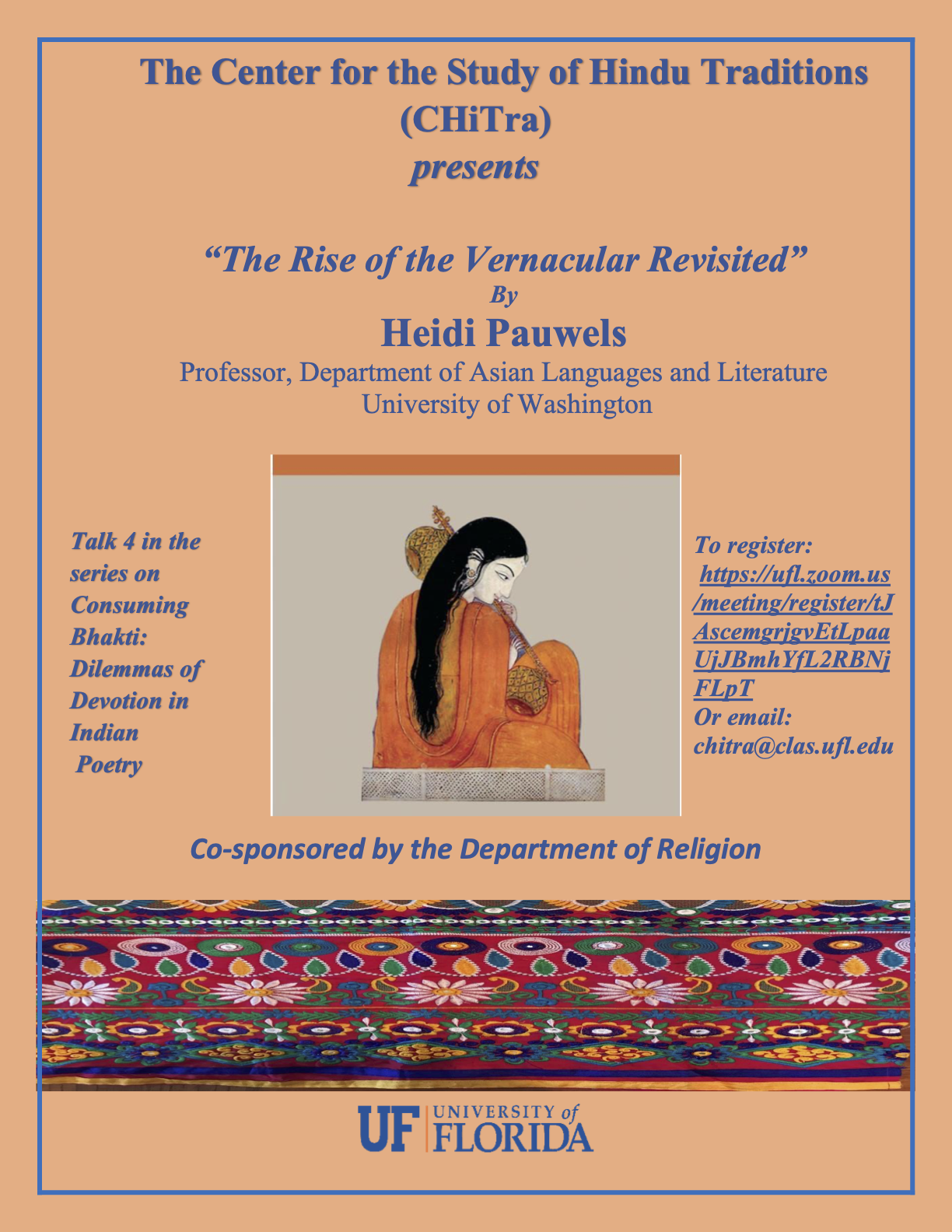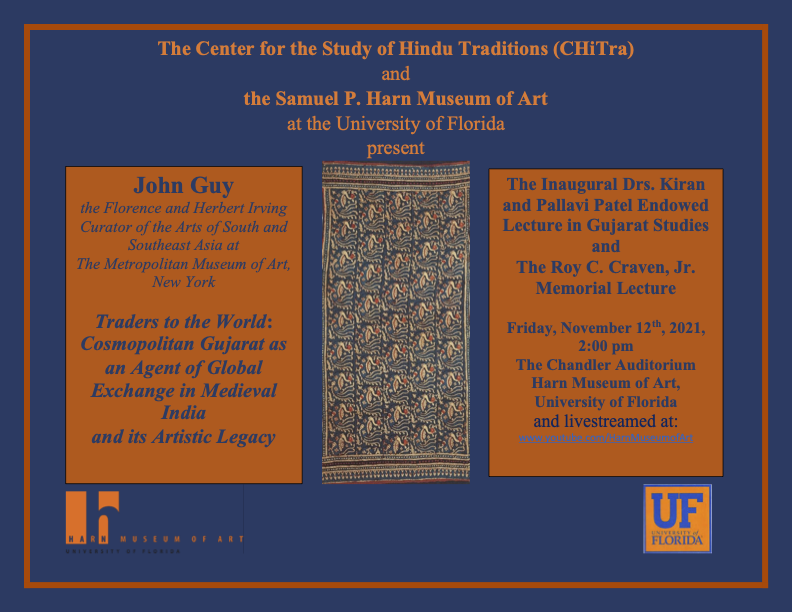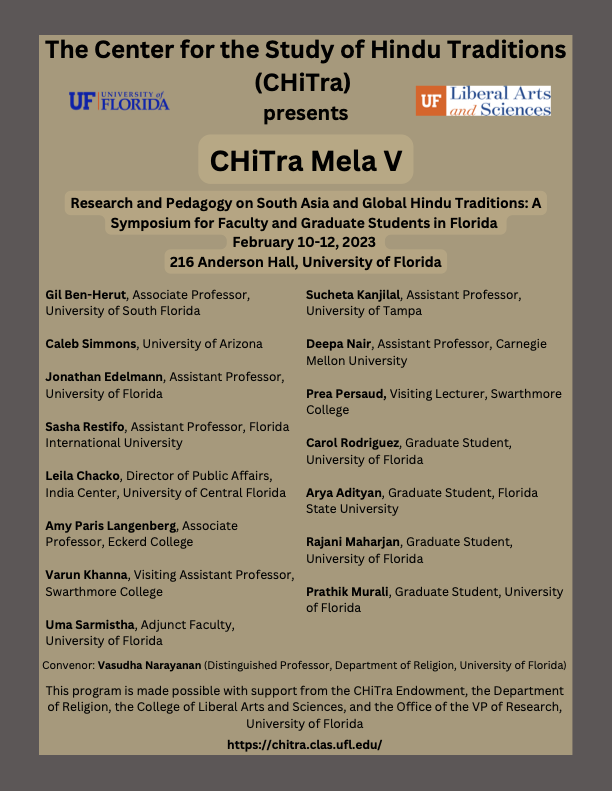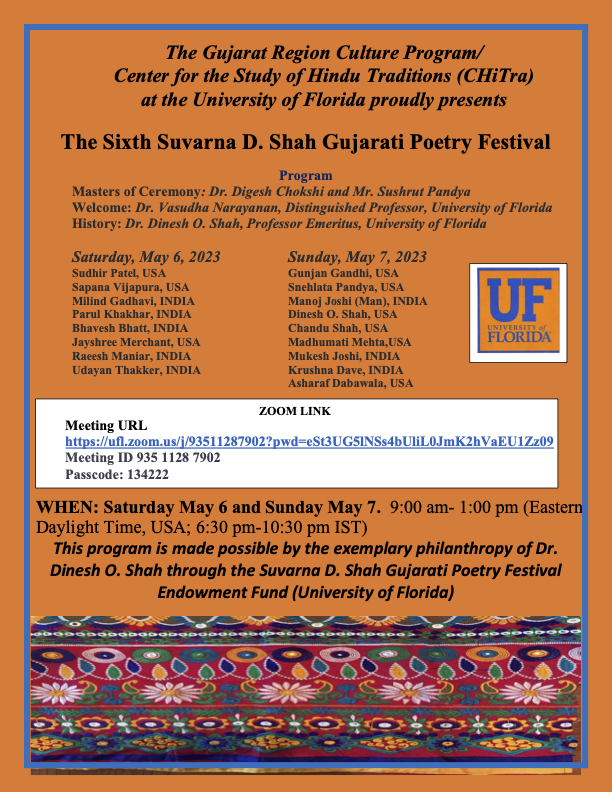Translating the Regional, Negotiating Bhakti and Sainthood
ZoomGil Ben-Herut “Translating the Regional, Negotiating Bhakti and Sainthood.” Dr. Gil Ben-Herut is an Associate Professor in the Religious Studies Department, University of South Florida. His research interests include pre-modern religious literature in the Kannada language, South Asian bhakti (devotional) traditions, translation in South Asia, and programming in Digital Humanities. His book Śiva’s Saints: The …
Critical Commensality as a Window into the Bhakti-Caste Question
ZoomJon Keune “Critical Commensality as a Window into the Bhakti-Caste Question.” Jon Keune is an Assistant Professor in Religious Studies at Michigan State University. His work focuses on religion, social history, and memory, especially the notion of equality. His recent monograph Shared Devotion, Shared Food: Equality and the Bhakti-Caste Question in Western India is being …
Bhakti Songs for the God on the Hill: The Legacy of Tallapaka Annamayya
ZoomHarshita Kamath “Bhakti Songs for the God on the Hill: The Legacy of Tallapaka Annamayya.” Harshita Mruthinti Kamath is Visweswara Rao and Sita Koppaka Assistant Professor in Telugu Culture, Literature and History at Emory University. Her research focuses on the textual and performance traditions of Telugu-speaking South India. Her monograph, Impersonations: The Artifice of Brahmin …
Emotion and Devotion: The Rise of the Vernacular Revisited
ZoomHeidi Pauwels “Emotion and Devotion: The Rise of the Vernacular Revisited.” Heidi Pauwels is professor in the Department of Asian Languages and Literature at the University of Washington in Seattle. Her publications include two monographs on sixteenth-century Bhakti: Krishna’s Round Dance Reconsidered(Curzon, London 1996) and In Praise of Holy Men (Egbert Forsten, Groningen 2002), a …
The Inaugural Drs. Kiran and Pallavi Patel Endowed Lecture in Gujarat Studies and The Roy C. Craven, Jr. Memorial Lecture
The Center for the Study of Hindu Traditions (CHiTra) / Gujarat Culture Studies Program and The Samuel P. Harn Museum of Art, University of Florida are delighted to present The Inaugural Drs. Kiran and Pallavi Patel Endowed Lecture in Gujarat Studies and The Roy C. Craven, Jr. Memorial Lecture by John Guy Florence and Herbert Irving …
Classical Carnatic Music Program
Music Building 101 435 Newell Drive, GainesvilleThe Center for the Study of Hindu Traditions (ChiTra) at UF in association with SPICMACAY-UF presents a Classical Carnatic Music Program by: Gayathri Venkataraghavan (vocal) Mysore Srikanth (violin) Sivaraman (mridangam) Manasi Prasad (kanjira) Sunday, October 30th 2022, Music Building 101, University of Florida Gayathri Venkataraghavan is one of the most sought-after Carnatic music performers in …
Dr. Shiwani Arora and Dr Saloni Taneja in Kesariya Balam: A Celebration of Indian Folk Music
Harn Museum of ArtDrs. Arora and Taneja will be accompanied by Prathik Murali (PhD Student, Religion), as well as Sroyon Sengupta, Agnidhra Gain, and Mohit Budhwani (Vocal) Accompanying Musicians: Rajesh Bhandari (Tabla), Shawn Bhajman (Harmonium), Jitendra Patel (Keyboard), Hemanshu Patel (Octapad), Pratyush Goberdhan (Sarangi), and Pandit Nandkishor Muley (Santoor). A welcome reception begins at 1 pm in the Harn Galleria. …
CHiTra Mela V
RESEARCH AND PEDAGOGY ON SOUTH ASIA AND GLOBAL HINDU TRADITIONS (CHITRA MELA V) February 10-12th 2023 More information can be found on the CHiTra website HERE.
The Sixth Gujarati Poetry Festival
ZoomThe Gujarat Region Culture Program / Center for the Study of Hindu Traditions (CHiTra) will be hosting the Sixth Suvarna D. Shah Gujarati Poetry Festival on May 6th and 7th (Saturday and Sunday), 9:00 am to 1:00 pm Eastern Daylight Time (USA); 6:30 pm to 10:30 pm IST (India). The program will present several established and young …
Rhythm Across Borders: Trailblazing Women of Classical Indian Dance in the USA
UF Innovate 747 SW 2nd Ave STE 160, Gainesville, FLInscribing a Classical Indian Dance Form on the US Landscape: Old Art, New Hometowns, Next Generation How does an Indian classical dance form that traces its origins to Bharata’s Treatise on Dance, (c. first century CE), become integrated into the American cultural fabric and become “mainstream,” with representatives in the National Council for the Arts? …

